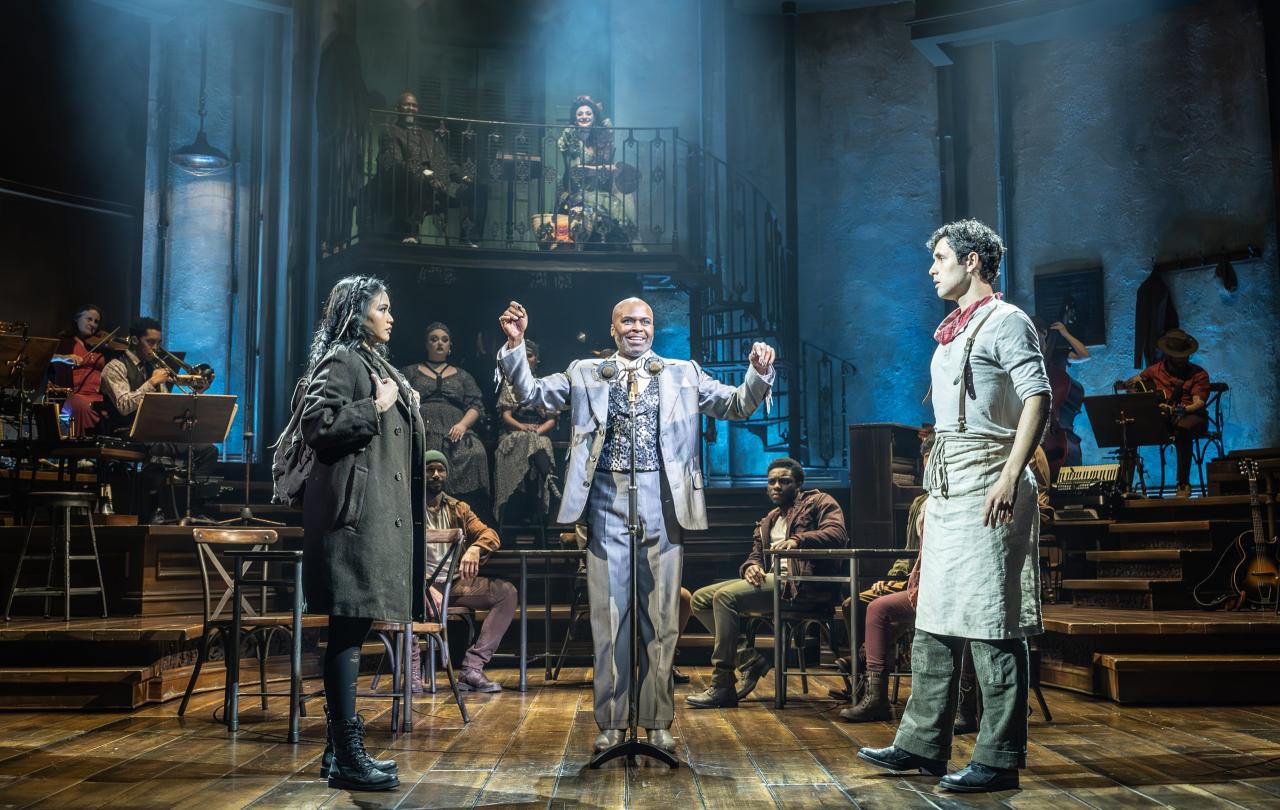Orpheus is soon confronted, however, with the ugly reality of Hadestown. Eurydice has already signed her life away. Beaten and defeated, his innocent worldview shattered, Orpheus sings over and over “is it true?”. He is asking something more fundamental than if what is happening around him is real. He is demanding if this, the world that is, is the world that should be. Should we let the truth belong to those who “load the dice”, he asks?
Hadestown’s walls take pity on Orpheus as they did before, echoing his song through the mines, where the workers – millions of other Eurydices – take up his song. The Dead-to-the-world realise they have been deceived, and remember who they were. And their faith starts to grow – that if Orpheus can walk out of Hades, then they can too. They want freedom.
Persephone, Hades’ estranged queen, is won over by Orpheus. But Hades understands the truth about love: one flower starts a Spring. The fall of a kingdom begins with a crack in the wall. Unwilling to kill Orpheus because of Persephone, Hades instead sets up the famous tragic terms: if Orpheus can walk all the way to the surface without looking back to check Eurydice is behind him, freedom is theirs. It is a test Orpheus is doomed to fail, thanks to his experience in Hadestown. The mentality of the underworld has come to live in Orpheus’s head, and so “the path to paradise” becomes “the road to ruin”, and the story meets its inevitable end.
And yet Orpheus does not fail as completely as he thinks. His musical gift has reconciled Persephone and Hades, and this has brought Spring to the world again. After the bows, the cast toast to the Orpheuses of the world, who show us things as they could be, and leave us with the responsibility to keep singing despite the circumstances, to reject despair, to hold on to that vision of every captive soul walking out of Hell.
Myths tell us what we collectively fear and desire. Contemporary retellings show us how these longings have changed – or not. In what C.S. Lewis called the “true myth” of Christ, we see the fulfilment of Hadestown’s hopeful vision. An early modern hymn describes Christ like Hadestown’s Orpheus – his presence “sees December turn’d to May”, making all the ground of the expectant “under-earth” turn to flowers. He is the one who has walked “the road that no one ever walked before”. The one who didn’t need to persuade the gods to empathise with him, because he was God. The one who was the perfect advocate for humankind, because he was human. Divinity without caprice, love without finitude: the one who experienced fear, temptation, ridicule – and yet did not turn back from the task. A peasant living under occupation: “this poor boy brought the world back into tune”.
I was fortunate enough to see Melanie La Barrie in one of her final performances as Hadestown’s Hermes. Her voice gives the divine storyteller a godparental authority: La Barrie’s Hermes doesn’t so much narrate the story as prophesies it. At the inescapable end of the play, Hermes stands looking down like a graveside mourner, searching for the words to reignite the company. Hermes seems to have a divine vocation to keep telling the tale “regardless of how it ends” until it changes. This act is presented to us as faith, hope, resistance. In this new reality, where Spring has returned and the cosmic order has shifted, the tale might turn out differently upon the next telling, and so Hermes strikes up the band once more.
Every year we sing the sad song again. The betrayal, the trial, the burial: the body in the tomb; the disciples in hiding. For so many, the-world-as-it-is feels like an endless Holy Saturday. The tradition of the Harrowing of Hell whispers to us to hold steady, because the rescuer is coming. “The darkest hour of the darkest night comes right before the dawn”, and a crack is appearing in the wall.






